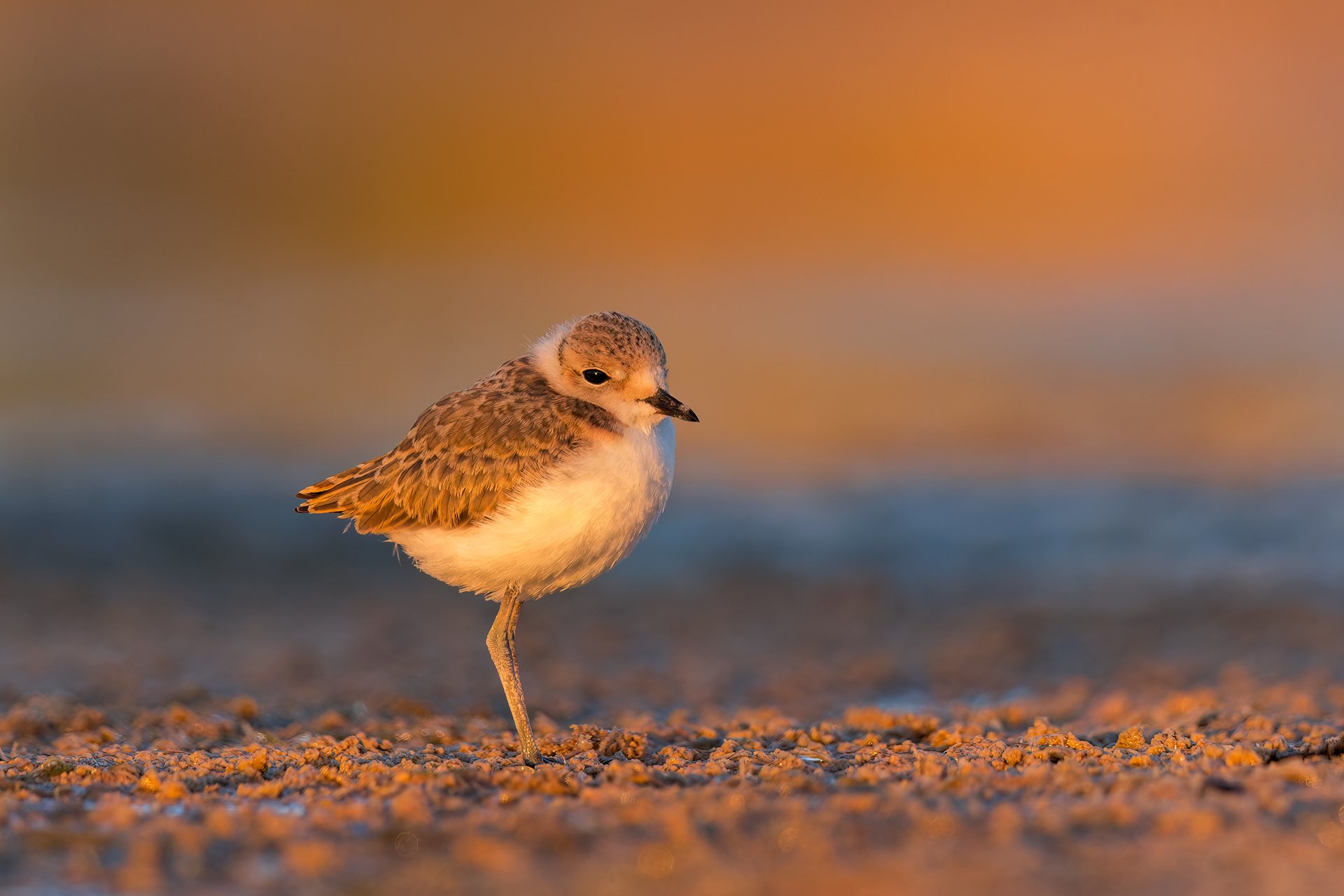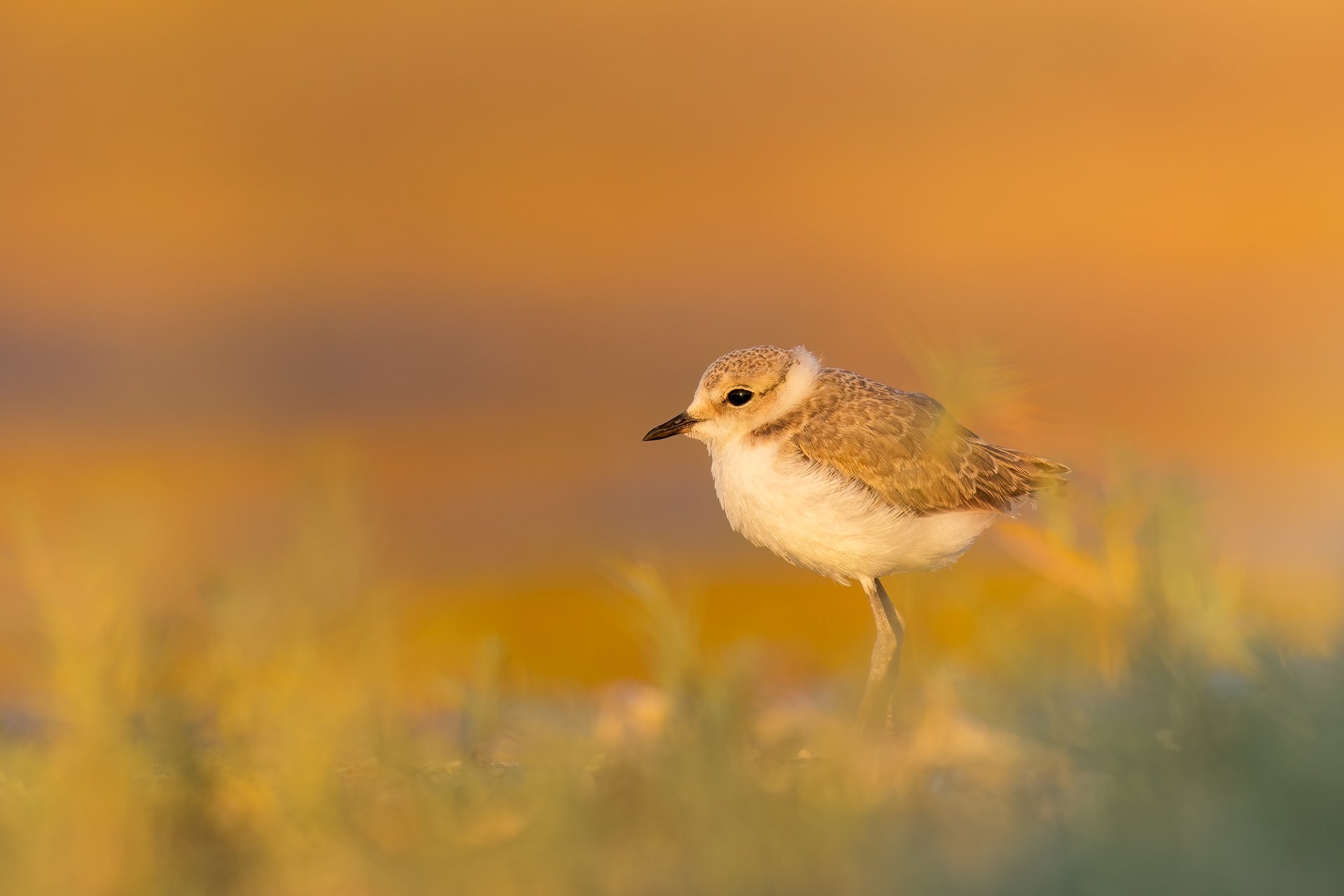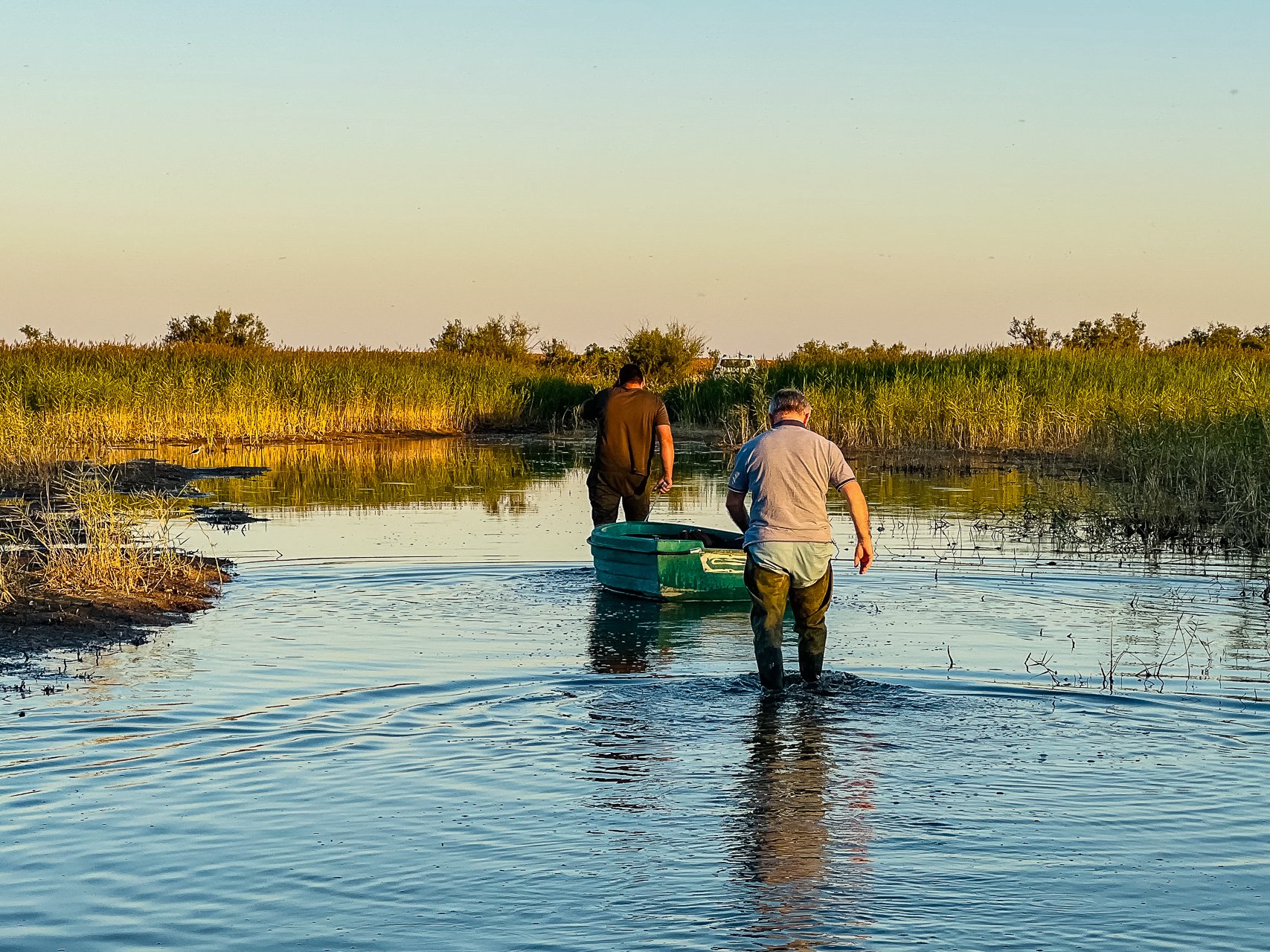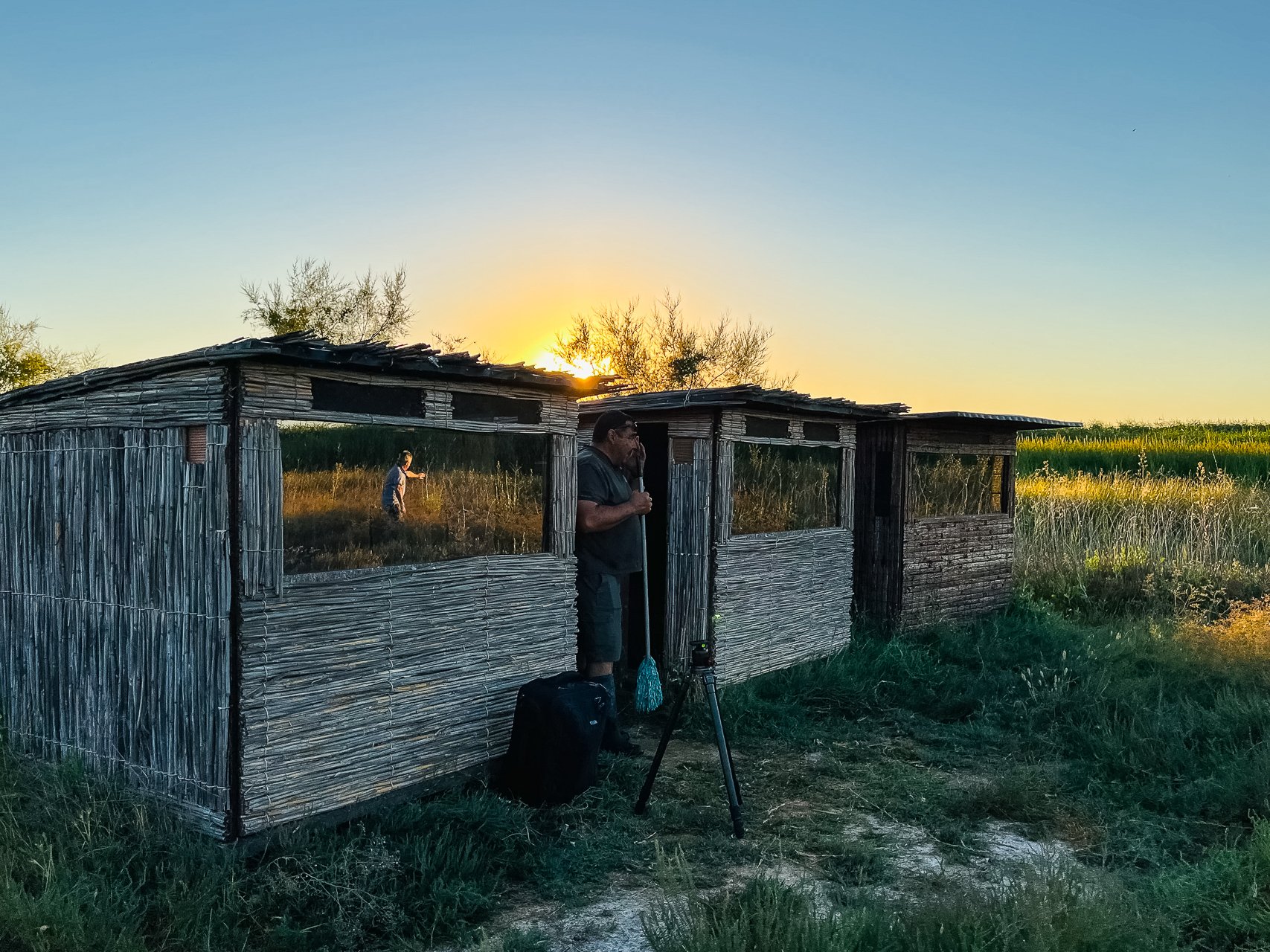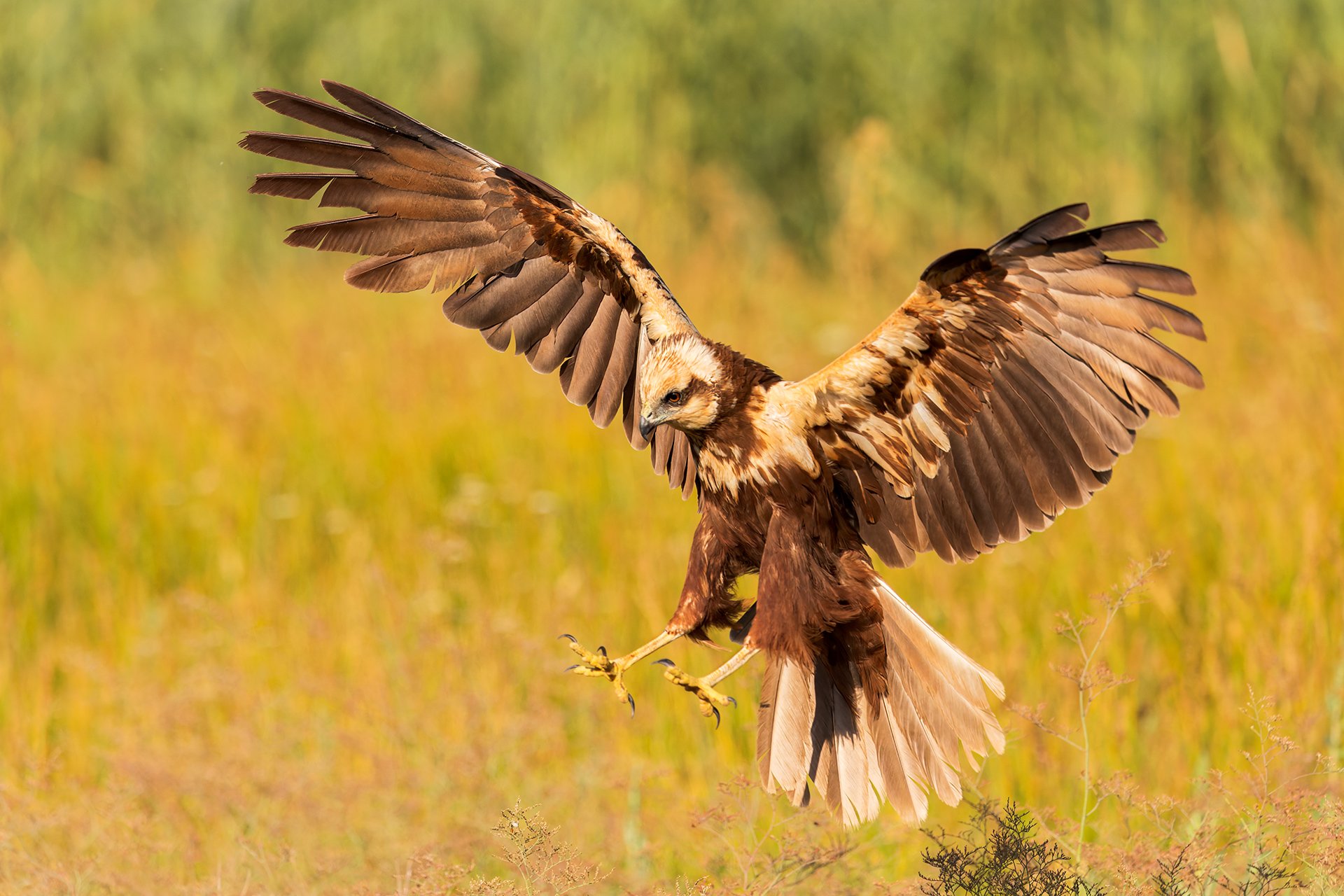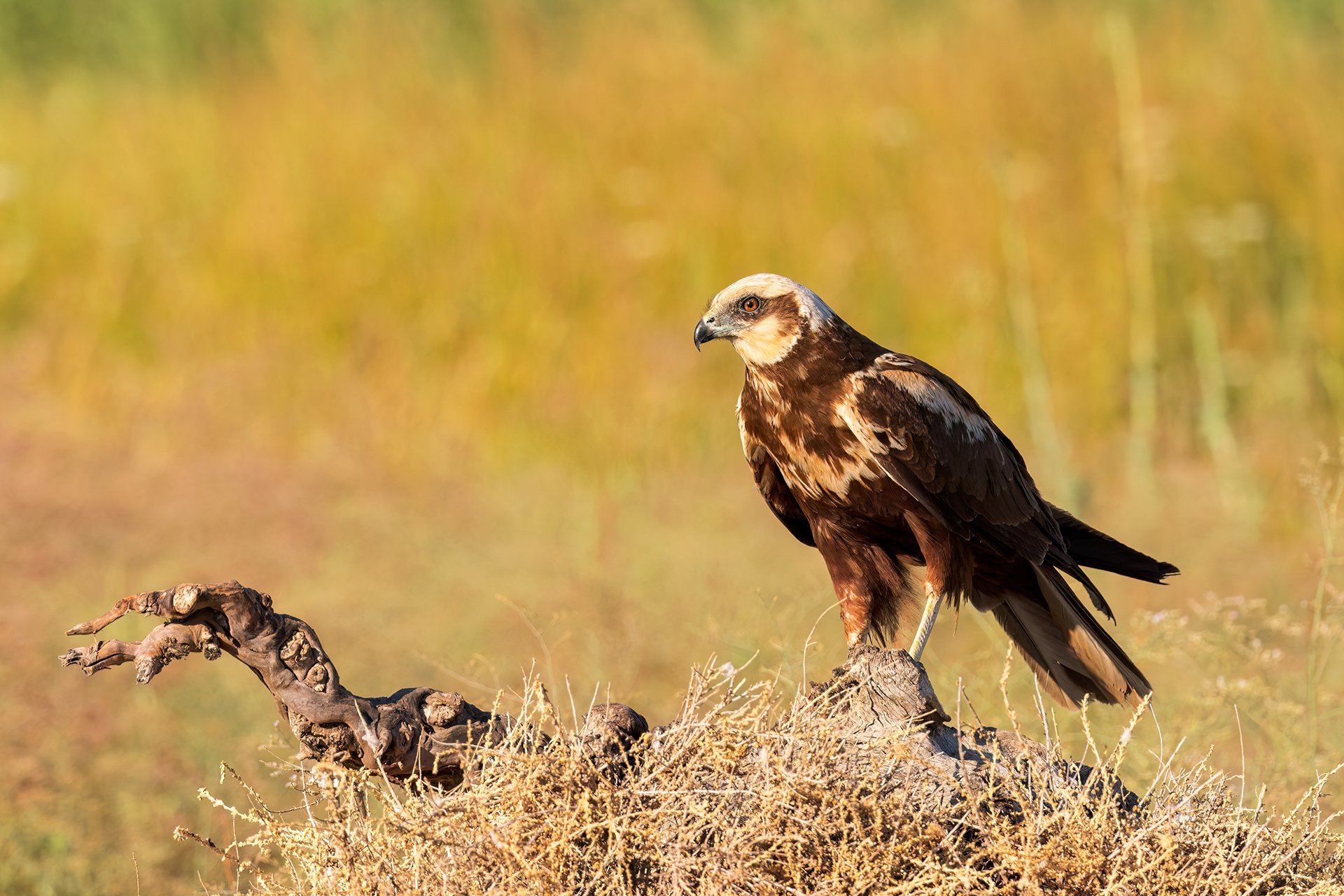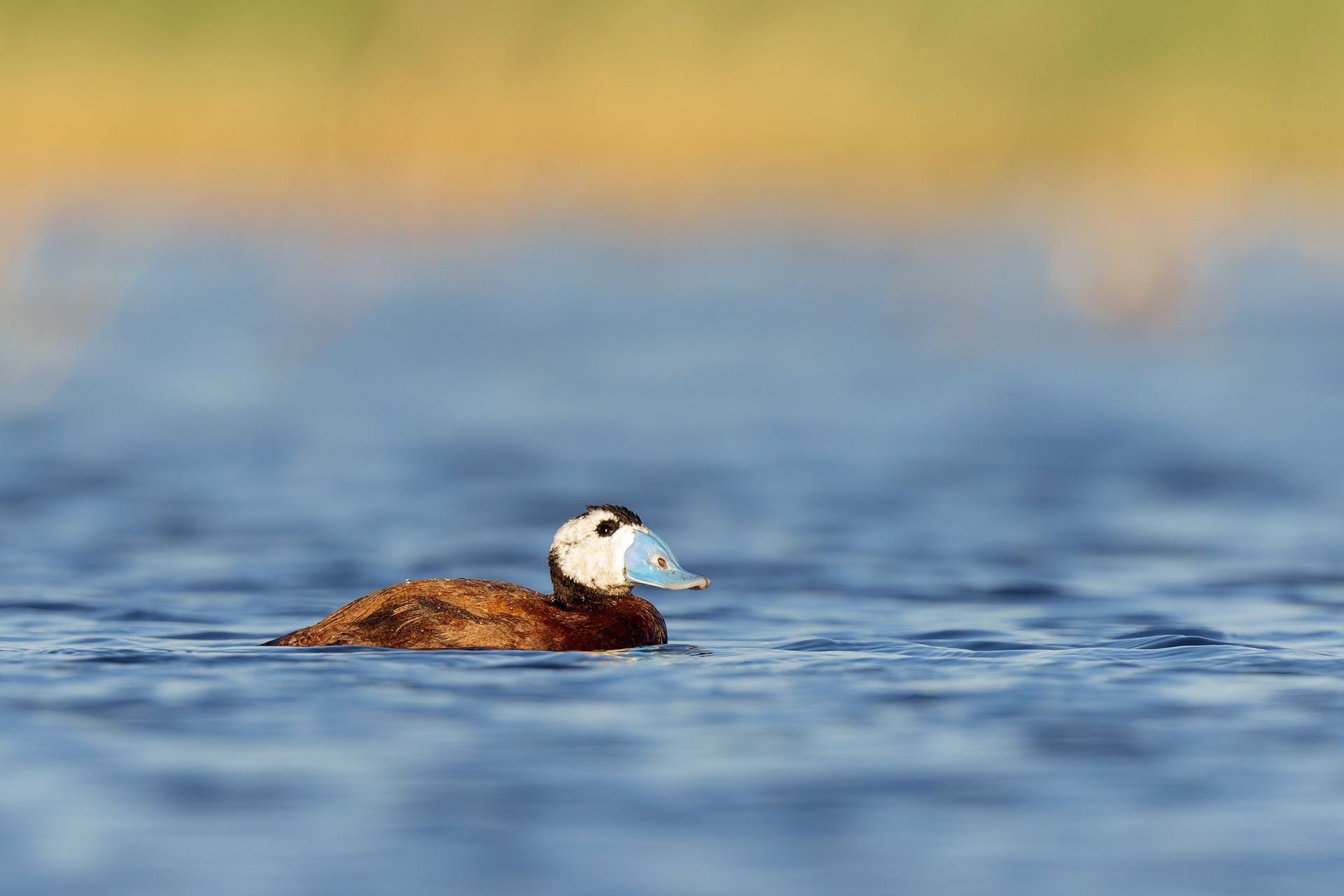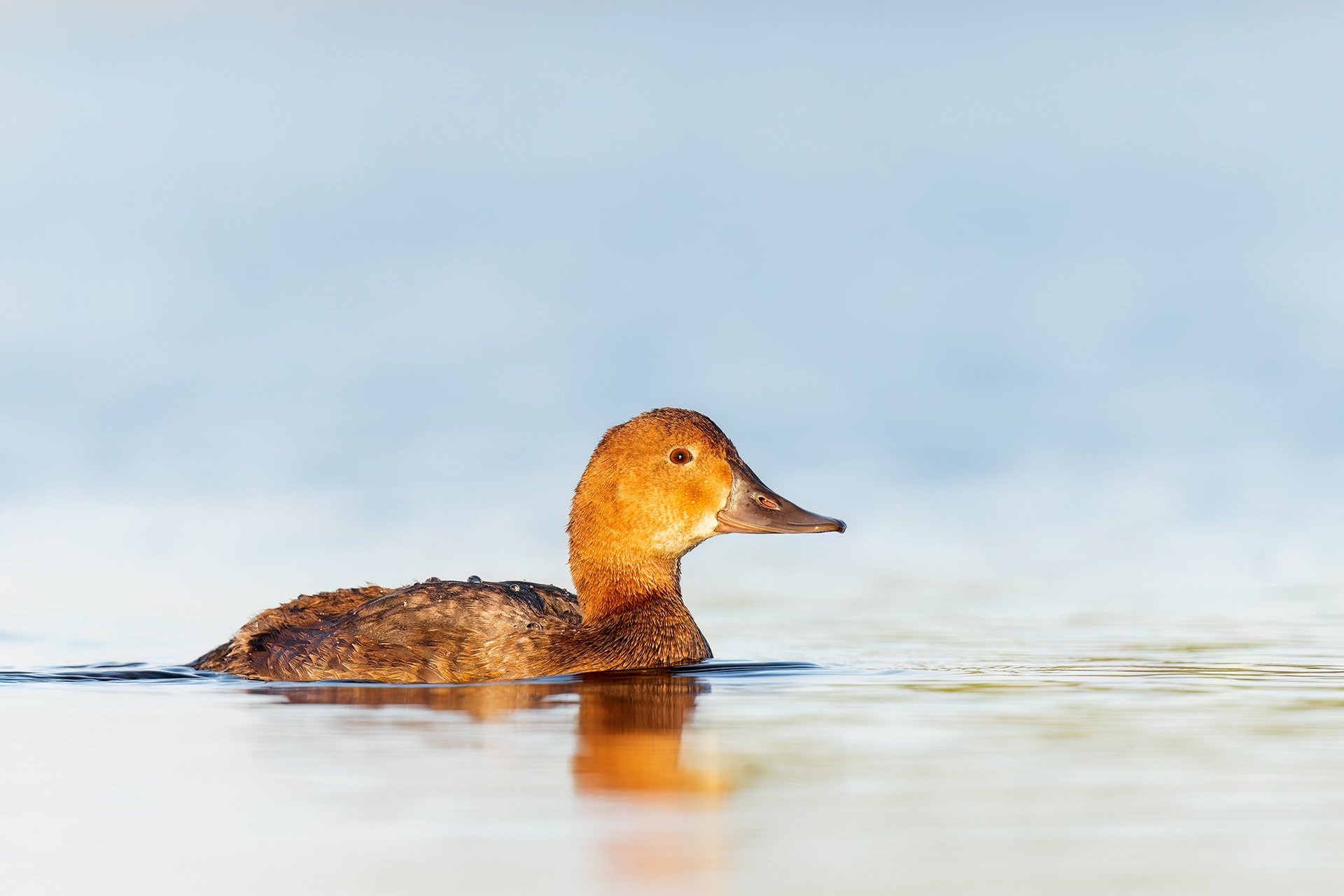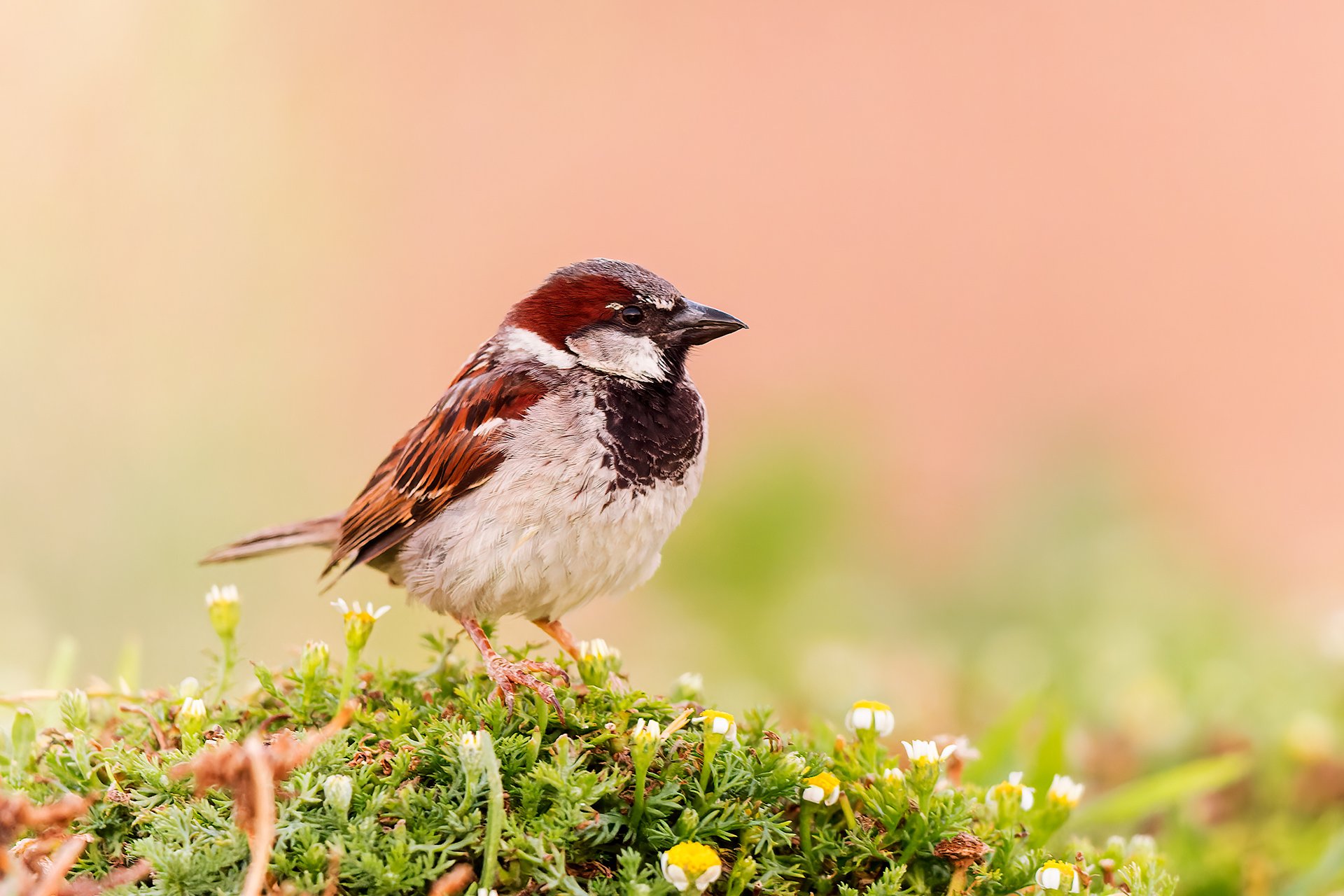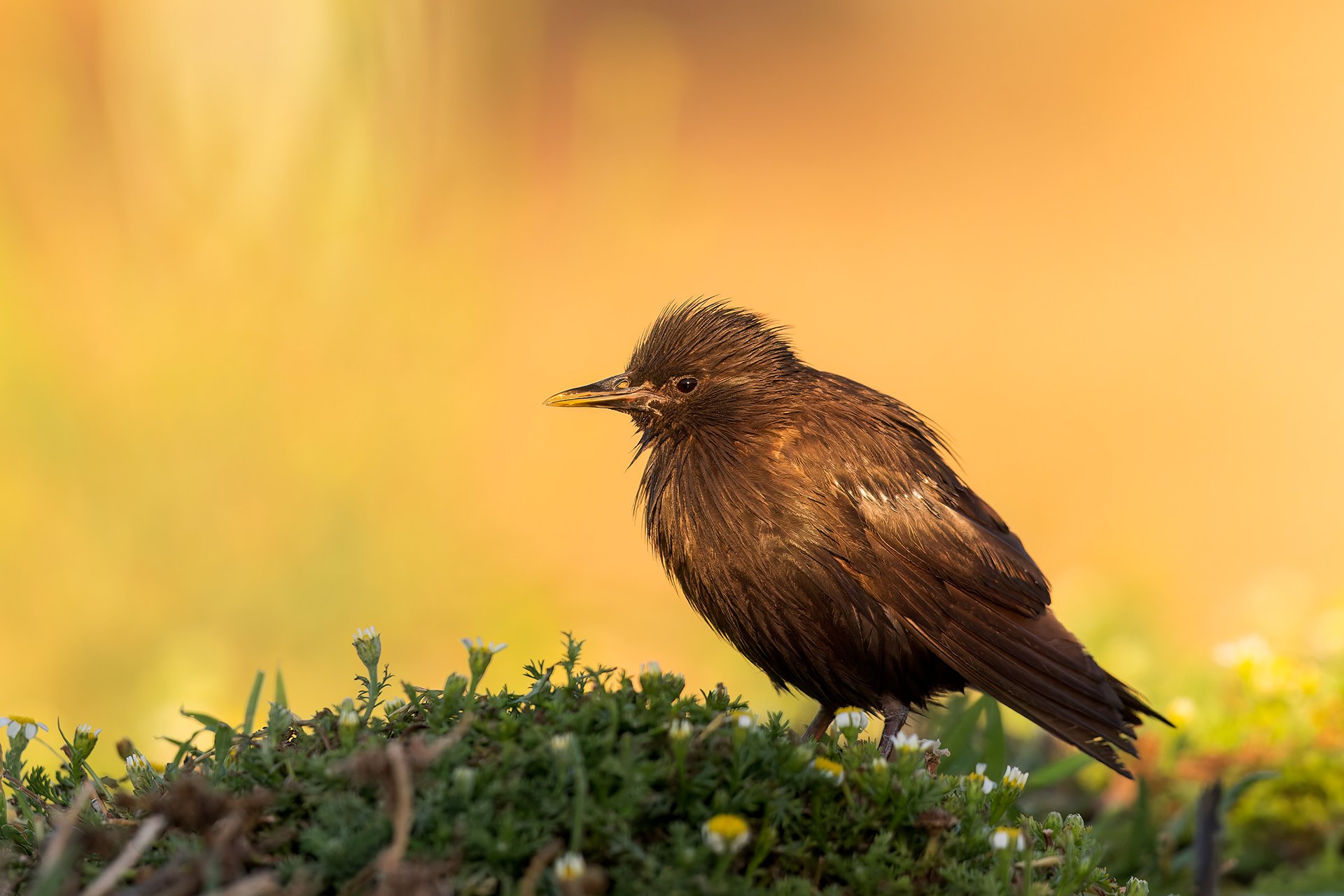Birds in Spain
On the back of Covid-19 it finally became possible to complete my long-awaited photo trip to Toledo in Spain. A whole week of bird photography lay ahead when I traveled to Madrid in early July 2022 to join a group of 8 nature photographers led by Drew Sproule of NaturesLens.
After an overnight stay at the Madrid Marriott Auditorium Hotel I met the other participants at Madrid airport, from where we were transported in a nice minibus to the Hotel Lalola in Villacanas, about 120 km south of Madrid.
Hotel Rural Lalola in Villacanas
It was not a traditional hotel but rather a small apartment complex with 12 nice rooms that opened onto a courtyard.
Fortunately, air conditioning was installed in my room as it was about 38 degrees Celsius in the shade!
Following some unpacking, it was time for a nice dinner at a restaurant before going to sleep – the alarm was set to 5:30!
First day in the hides
At 6 o’clock we were picked up and driven the approximately 10 km to the farm El Taray on whose territory the photo hides are located.
Together with Nick, I had to sit in a small photo hide high up beside a roof ridge, where there was an opportunity to photograph lesser kestrel. It was a fine hide with a view of an older tiled roof where the lesser kestrels were breeding.
There was a lot of activity right from the start, and after sunrise at 7:00, we also got perfect light.
In addition to the many adult kestrels, there were also chicks of various sizes. A lot of images was taken while the conditions were optimal. Later, the sun and the light became too strong for proper photography, so the last couple of hours before the pick-up at 11 we could have done without - and it had gradually become very hot in the hide!
Back at the hotel the image files were duly copied after which we gathered at 13:15 to go to Restaurant Montes a little further down town. It turned out to be a fantastic restaurant where we enjoyed an excellent dinner and a good glass of wine. It became our regular place to eat every afternoon on the trip.
After dinner it was time for a much-needed bath and some relaxation before we were picked up again and driven to the farm at 18.
Now it had become unbearably hot with probably 45 degrees Celsius in the small hide, so a lot of water was needed for the next 3-4 hours photography.
We were given a couple of sandwiches to eat during the evening. Mine were consumed immediately, as the intense heat was not exactly beneficial for the durability and the light was still a little too bright for photography.
Not the kind of reflections you expect from a hide (Waterhole Hide)
This time we sat in a hide called "Waterhole" in front of an artificial pond which attracted quite a few different birds.
Unfortunately, the quality of the built environment was poor.
The reflections of the birds in the water were disturbed by other reflections from a wire in the background.
Also, there were a number of disturbing elements in the water as well as tall grasses that blocked the view.
Furthermore, the entire waterhole was in shadow for the last hour before sunset, when the light was optimal.
On the other hand, there were quite a few exciting birds at the waterhole.
Especially the silly-looking stone curlew who came a couple of times to drink. It is a very shy bird, and can therefore be difficult to photograph.
I mainly tried to take pictures when the stone curlew was heading towards the water and used the surrounding vegetation to create a blurred foreground. At the same time, I managed to get a nice golden background just before sunset where the waterhole itself was in shadow.
Stone curlew in the last light before sunset
There were also quite a few spotless starlings as well as the iconic Spanish sparrow. We enjoyed a single visit from a green sandpiper and the many rabbits in the area sometimes provided nice photo opportunities.
At 10 o’clock in the evening we were picked up and driven back to the hotel where image files had to be uploaded and backed up before it was time to go to bed around midnight.
Second day
We were driven to the farm at 6:00 and then on to the hide Vega Mazon with the expectation of photographing birds of prey. There were three hides and we each got our own.
It wasn't long before the first raptors appeared. They were probably used to getting fed at this time of day. Think it was dead rabbits that they used as bait.
Several marsh harriers came by as well as a few black kites.
Marsh Harrier just after sunrise
A beautiful Black kite in front of the hide Vega Mazon
A stork passing the hide
Later in the morning we also had the pleasure of three storks passing the area in front of the hides.
It turned out to be a good session and especially in the first hour after sunrise there were many nice photo opportunities.
By 10 o'clock there was no longer any activity and the sun had become too bright for photography anyway.
Therefore, I had a short nap before pick-up and transport back to the hotel at 11.
Another wonderful dinner at Restaurant Montes before returning to the farm at 6 o’clock in the evening. I was going to have my debut as a hydro-hide photographer.
Four of us from our group as well as two other photographers were going to lake Laguna de Taray to do floating hide photography.
The first challenge was getting into a wetsuit which for many obviously was a difficult process. Maybe because I'm so thin it was easy for me... ; - )
After that, we were driven to the lake where the many floating hides were waiting on the shore. I got a nice hide from Leofoto and set it up with my tripod head and camera with a 500mm lens attached including a 1.4 extender (700mm).
A younger local guide followed us into the water and through a canal to another part of the lake.
A hydro-hide in action on Laguna de Taray
The water depth was a little below one meter. It was a bit strenuous at times walking on the bottom of the lake and I managed to cramp both of my shins at one point.
Unfortunately, it was quite windy making waves and ripples on the water. Obviously, I prefer a smooth surface for fine reflections. Also, it was more difficult to hold the camera still when taking images.
However, you can't do anything about the weather, so it was just about getting the best possible out of the conditions. I used a relatively high shutter speed to compensate for any shakes and tried to find some calm areas.
Laguna de Taray is relatively large, so you have to spend some time finding birds to photograph. However, after half an hour of searching and getting used to walking on the lakebed, I found a black-necked grebe with a chick.
Black-necked grebe in Laguna de Taray
They moved a lot and dived constantly making it difficult to get in a good position. At the same time there were quite a lot of reeds in the lake, which disturbed the view and one's freedom of movement.
We only had a couple of hours so I decided to concentrate on photographing these grebes for the rest of the time.
Black-necked grebe feeding its young
When we were almost back at the collection point at 9pm there was a red-crested pochard duckling in the water completely unaffected despite 6-7 floating hides had to pass.
It was very cute, so I took a few pictures. I observed an area of shade nearby the shoreline and waited for the bird to enter still being illuminated by the sun which created a black framing.
Red-crested pochard duckling in the shade and last evening sun
Naturally, we were wet in our suits and were all packed on the back of the pickup. After about five minutes of crazy driving on the bumpy gravel road we were back at the farm.
Although the weather conditions this evening on the lake were not optimal, it was still an exciting experience. It's easy to get carried away by the possibilities this kind of photography offers so I may invest in a floating hide myself in the nearby future.
Back at the hotel, I had a shower to get off the dirty lake water and then handle image files – once again I went to bed after midnight.
Third day
This morning, we were going to a hide to photograph hoopoes. The day before, one of the other participants had not seen a single one at the same spot so hopes were not high.
Hoopoe with a raised crest
Most of the time there were lots of spotless starlings and fortunately a hoopoe came by for a short visit.
However, it sat on some unattractive branches and stones mostly with a poor background.
All in all, the conditions around the hide were bad.
By cropping tight to remove a table below some rocks where it landed, I managed to get a decent image of this beautiful bird with its crest nicely raised.
In the evening, the photo shoot was shortened to 8pm as we had to go directly to Campo de Criptana to see some nice old windmills followed by a dinner.
Therefore, we only had two hours in a hide supposing to photograph rollers. It was a very small hide to accommodate two photographers and the temperature was unbearably hot.
Outside, the setup was dilapidated and totally useless for bird photography. However, it didn't matter much as not a single bird came!
The roller hide setup was definitely worn out - and no birds to photograph
Fortunately, we had to leave early for sightseeing and dinner.
We drove 45 minutes to the town of Campo de Criptana. On the Cerro Calderico ridge there are twelve old windmills that inspired Miguel de Cervantes to create his famous "Don Quixote".
Arriving just before sunset, we had the opportunity to see the windmills and take a few photos - I used my iPhone!
One of the twelve old windmills that inspired the tale of Don Quixote
Afterwards, we enjoyed a wonderful outdoor dinner at the fine Restaurante Las Musas. It was past midnight before we were back at the hotel, but the trip was definitely worth the late bedtime.
Fourth day
Late to bed and an early rise - we were picked up at the hotel already at 5:45.
We had to go to a hide called "Masiega".
Masiega hide in the middle of the reeds
Great reed warbler singing
Going there was a special experience.
The transport took place in a small rowing boat and we sailed through a narrow channel to a hide between a lot of reeds.
Subjects of this morning were songbirds and with a little luck the beautiful bearded tit.
The latter only came once for a few seconds but luckily I got a nice image.
Otherwise, it was mainly great reed warblers that came to the location where food had been laid out on a platform.
A Bearded tit landed on a reed for just a few seconds
All in all, a reasonable morning although being a challenge to take pictures within the many reeds.
The evening trip went to a large water hole with various wading birds. Nick and I were provided with a very small mobile hide where we could photograph through holes in the fabric which was nice. In all stationary hides we had to photograph through a window of special glass.
Nick and I were in the small hide to the right
We each got a chair to sit on, but wading birds must be photographed at eye level.
Thus, I decided to lie curled up on the ground using an opening at the bottom of the hide. It was very hard on the body and extremely dirty.
However, the result was fantastic. I got a lot of nice images and especially in the last half hour, when the light was perfect and the background impressively colorful.
Black-winged stilt in the evening light
During the session we had Black-winged stilt, Kentish Plover and the beautiful Collared Pratincole coming to the location in front of the hide.
A beautiful Collared Pratincole standing in the shallow water outside the hide
Kentish Plovers in the colorful light before sunset
I really loved using this wader hide as I was not relying on any artificial setup of branches or rocks and the birds were there without being fed.
A great day of photography although I had to wash my trousers and clean the photo bag before going to bed … ; - )
Fifth day
Then, it was Friday morning and a hide called El Espartal waited for us to photograph birds of prey.
Three of us from the group were driven to the site with two hides. I got a "private room", but that was also the only good thing about that morning.
At the beginning, some marsh harriers and a single buzzard came and had some of the laid-out food.
Marsh harrier in the first light of the day
However, the surroundings were poor for photography. The food was put on small stands covered with straw and mostly the food was visible – not what you want as a nature photographer!
Furthermore, the tall grass was very close to where the raptors were supposed to sit and it was impossible to get a nice blurred background even with a large aperture to create a shallow depth of field.
Common buzzard standing at a very messy spot - the layout of the setup was poor
After an hour it was all over and we had nothing to photograph for the next three hours before pickup at 11.
According to plan I was to return to the same hide next morning, but that was completely out of the question. Fortunately, I was able to arrange an extra hydro-hide session instead.
In the evening, Nick and I were out in the Marsh Harrier hide - it was quite an experience.
Before leaving the farm, we had to put on short waders. The reason was that the hide was out in the swamp.
On arrival, we had to walk in mud and shallow water to a small rowing boat in which our luggage was put. Then, we followed the guide Fransisco, who pulled the boat through a canal.
There were three hides on the site, so we each had our own.
In front of us lay a bare piece of land with reeds in the background. The marsh harriers live in the reeds and are coming to the area outside the hides with the help of some food.
For a long time, nothing happened and I was already beginning to wonder if this was a repeat of the morning's lack of subjects to photograph.
After an hour of waiting some marsh harriers appeared and we had the opportunity to get some nice images. I even tried to photograph the birds when they came flying into the spots with food.
A marsh harrier flying in front of the hide
It became quiet for the last hour so we didn't get to take advantage of the best light. However, the session was fine and we returned happily to the hotel.
Sixth day
I had arranged an extra session in a floating hide this morning.
In the floating hide - yes, I look a bit tired … ; - )
We arrived at the farm at 6:00 and all the often long transports to the various hides began.
As the only one going to the lake, I was scheduled for the last transport.
Wearing a wetsuit, I stood by the farm and waited for a long time.
The sun was rising and it became the best light of the day for photography when I was told about a further delay due to a puncture.
Of course, these things happen but sadly I missed the golden hour.
However, it was exciting to be on the lake all by myself and this time the wind wasn't quite as strong.
My floating hide on Laguna del Taray
On my first trip using the floating hide I concentrated on photographing black-necked grebes.
This time, it was mainly whiskered terns that became my target.
Many whiskered tern chicks were waiting for their parents to bring food.
I stood for a while in front of a very loud calling chick who was obviously hungry.
My patience and its persistence paid off when one of the parents suddenly came flying in with a small fish.
Whiskered tern chick being fed
I also saw a white-headed duck for the first time as it is not a common species in Denmark. Also, some black-headed gulls and a common pochard came on the card.
As previously mentioned, I have become a bit taken by this kind of photography and expect to have my own floating hide by next spring.
As usual, we departed for restaurant Montes at 13:15 and had our last wonderful dinner. It has been an exquisite pleasure to eat every day at this amazing restaurant. The food is great and the staff very friendly. Gradually, we also learned to order in fluent Spanish... ; - )
The evening featured photography in the Little Owl hide – finally!
I have always wanted to get some good pictures of the charismatic little owl. The other participants from our group had all had the opportunity to see this beautiful owl during their stay in the hide, but only for a few minutes.
As usual, it was unbearably hot in the hide this evening. With daily temperatures close to 40 degrees Celsius in the shade it would probably be close to 50 degrees in the hide, which had been in the baking sun all day.
It was always most comfortable in the morning, when the cooler night gave pleasant temperatures in the first hours of the day.
We waited a long time for something to happen, but luckily a woodchat shrike came and perched nicely. A little later even a Roller came for a short stay.
A Woodchat shrike was entertaining in front of the Little Owl hide
Even a Roller came by this evening
The little owl was taking long to appear, but suddenly I saw a shadow that looked familiar. The beautiful owl sat on the roof of a collapsed building a little to the right of the hide.
Then, it came down onto the unfortunately poor setup in front of the hide but at least I managed to take some images during its 7 minutes stay – the evening was saved!
Finally, I got an image of the Little owl although the setup could have been better
For the next 1 ½ hours nothing happened and it was getting close to 9pm, where we usually would be picked up.
Much to our delight, the little owl suddenly returned and we got a few minutes in good light before it flew away as the car came.
The Little owl returned shortly and stood for a while on a pile of wood where it usually lives
We were the first to return to the farm, after which we waited an hour for everyone to be brought in from the hides so we could return to the hotel.
Final morning in the hides
Then it was time for the last photo shoot of the trip.
Once again, I was going to the "Waterhole" and was excited to see if it was better from the morning side. Fortunately, that turned out to be the case.
After removing some grass and other small things that could interfere with my photography, the conditions were much better in the morning.
The special about "Waterhole" is that the hides can be moved on a construction of rails. This makes it possible to adjust the position according to the direction of the sun – quite a clever setup!
From this opposite side of the water hole, we had no annoying reflections from the wire fence that was behind us this time.
In fact, it was a nice morning session. We were lucky that the exciting Stone Curlew came by several times while the light was still optimal. Furthermore, the little green sandpiper was also back.
The odd looking Stone Curlew drinking from the water hole
The green sandpiper also came to the water hole this morning
Otherwise, there were the usual sparrows, spotless starlings and many rabbits.
We had to depart from the hotel to the airport in Madrid at 12:30, so this morning we were picked up from the hide at 10, where the light was no longer suitable for photography anyway.
Back at the hotel, there was plenty of time to download image files, a much-needed shower and the final packing.
Following 1 ½ hour drive in the same nice minibus that transported us on the first day, we were at the airport at 14:00.
The other participants who were going to the UK could fly home in the afternoon. However, I had to spend another night at the Madrid Marriott Auditorium Hotel, before the trip to Copenhagen the next morning.
Closing remarks
It was great finally going on my first photo trip to Spain and I definitely returned home with lots of nice images.
However, looking back it is with somewhat mixed feelings.
NaturesLens did a well-organized trip with a fine hotel and catering far beyond what can be expected. At the same time, our guide Drew Sproule was a knowledgeable photographer and a very nice person.
Furthermore, a big thanks to my absolutely fantastic fellow photographers who were always a great and entertaining company during the daily dinner at Montes, which we all appreciated so much.
After all, my overall assessment of the trip has to be based on the opportunities for nature photography being the reason for me to participate.
No doubt that the birdlife of estate El Taray in Villacanas is a dream for every wildlife photographer. And to me, the experience with floating hide photography was a valued bonus.
The challenge, however, is that they operate the hides on the farm without sufficient professional insight into the requirements of a dedicated photographer.
Often, the hide setups were poor and branches and platforms generally worn out.
Whether the latter is due to a couple of years with Covid-19 and lack of guests and income could of course be part of the explanation.
It's a real shame considering the amazing birdlife that exists in the area. It just requires a completely different and professional understanding by Hides de El Taray.
Obviously, this is my personal assessment and I admit to make high demands. Also, a considerable amount is paid to participate in such an organized photo tour.
However, if the primary goal is to experience impressive bird life you have come to the right place. But if artistic opportunities for bird photography are the most important reason, I would suggest going other places.
A safe choice could be at Bence Mate in Hungary. There, bird life is just as amazing and the hides and their setups are made by a professional nature photographer. I am already looking forward to May 2023 and a whole week at Bence's farm in Pusztaszer.
